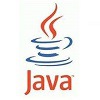RHDS或centos-ds或389目录服务安装总结
1、理论基础
1.1、概念
RHDS是Red Hat Directory Service的简称,如果基于CentOS系统其别名为centos-ds或389目录服务,是一套基于openldap的企业目录服务。
1.2、功能
- 代替LDAP
- 同步微软的活动目录信息
1.3、目录结构
1.4、服务的控制
1.4.1、启动目录控制台命令
redhat-idm-console redhat-idm-console -a http://localhost:9830 centos-idm-console centos-idm-console -a http://localhost:9830 389-console
注:以上由于历史原因,命令需根据系统的版本选择
1.4.2、命令行方式
service dirsrv {start|stop|restart} instance
/usr/sbin/{start|stop|restart}-dirsrv instance
/etc/dirsrv/slapd-instance_name/{start|stop|restart}-slapd
/usr/sbin/{start|stop|restart}-ds-admin
service dirsrv-admin {start|stop|restart}
1.5、工具的使用
ldapmodify -a -D "cn=directory manager" -w secret -p 389 -h server.example.com
2、实践部分
2.1、环境配置
2.1.1、主机名称和IP配置
OS=CentOS-5 x86_64 或 CentOS-6 x86_64
hostname=ds.cmdschool.org
ipaddress=10.168.0.155
2.1.2、yum的配置
1)CentOS 5的安装默认版本
默认版本安装
yum groupinstall -y 'X Window System' 'GNOME Desktop Environment' yum install -y centos-ds*
2)CentOS 5安装8.1版
vim编辑/etc/yum.repos.d/CentOS-Extras.repo指定yum源
[CentOS-Extras] name=CentOS-Extras baseurl=http://vault.centos.org/5.4/extras/x86_64/ gpgcheck=0 enabled=1
安装8.1版
yum install -y centos-ds-8.1.0 centos-ds-admin-8.1.0 centos-ds-base-8.1.0 centos-ds-base-devel-8.1.0 centos-ds-console-8.1.0 centos-admin-console-8.1.0
3)CentOS 6的安装默认版本
yum groupinstall -y 'X Window System' Desktop yum install -y tigervnc-server yum install -y 389*
2.1.3、配置域名解析和主机名称
vim /etc/hosts
127.0.0.1 localhost localhost.localdomain localhost4 localhost4.localdomain4 ds.cmdschool.org ds ::1 localhost localhost.localdomain localhost6 localhost6.localdomain6 10.168.0.155 ds.cmdschool.org ds
vim /etc/sysconfig/network
HOSTNAME=ds.cmdschool.org
注意(DNS全域名要写前面)
2.1.4、检查进程可打开文件句柄数量
cat /proc/sys/fs/file-max
修改如下参数让其大于64000配置
fs.file-max = 64000
2.1.5、增加打开文件最大数目限制
vim编辑/etc/security/limits.conf
* - nofile 8192
2.1.6、配置密码复杂度
vim编辑/etc/pam.d/system-auth,增加如下内容:
session required /lib/security/$ISA/pam_limits.so
2.1.7、重启系统
reboot
2.1.8、配置VNC
1) 配置VNC服务
vim编辑/etc/sysconfig/vncservers
去掉以下两行的注释并修改VNCSERVERS 的参数,详见如下:
VNCSERVERS="1:root" VNCSERVERARGS[2]="-geometry 800x600 -nolisten tcp -nohttpd -localhost"
设置VNC密码
vncpasswd
启动服务并
/etc/init.d/vncserver start chkconfig vncserver on
2)CentOS 5配置
vim编辑~/.vnc/xstartup
并修改如下:
#twm & gnome-session &
vim编辑/etc/sysconfig/iptables配置防火墙规则
-A RH-Firewall-1-INPUT -m state --state NEW -m tcp -p tcp --dport 5901 -j ACCEPT
3)CentOS 6 配置
vim编辑/etc/sysconfig/iptables配置防火墙规则
-A INPUT -m state --state NEW -m tcp -p tcp --dport 5901 -j ACCEPT
4)重启防火墙
/etc/init.d/iptables restart
2.2、实例初始化
使用如下命令初始化:
setup-ds-admin.pl
向导如下:
============================================================================== This program will set up the CentOS Directory and Administration Servers. It is recommended that you have "root" privilege to set up the software. Tips for using this program: - Press "Enter" to choose the default and go to the next screen - Type "Control-B" then "Enter" to go back to the previous screen - Type "Control-C" to cancel the setup program Would you like to continue with set up? [yes]: ============================================================================== BY SETTING UP AND USING THIS SOFTWARE YOU ARE CONSENTING TO BE BOUND BY AND ARE BECOMING A PARTY TO THE AGREEMENT FOUND IN THE LICENSE.TXT FILE. IF YOU DO NOT AGREE TO ALL OF THE TERMS OF THIS AGREEMENT, PLEASE DO NOT SET UP OR USE THIS SOFTWARE. Do you agree to the license terms? [no]: yes ============================================================================== Your system has been scanned for potential problems, missing patches, etc. The following output is a report of the items found that need to be addressed before running this software in a production environment. CentOS Directory Server system tuning analysis version 10-AUGUST-2007. NOTICE : System is x86_64-unknown-linux2.6.18-164.el5 (1 processor). WARNING: 998MB of physical memory is available on the system. 1024MB is recommen ded for best performance on large production system. NOTICE : The net.ipv4.tcp_keepalive_time is set to 7200000 milliseconds (120 minutes). This may cause temporary server congestion from lost client connections. Would you like to continue? [no]: yes ============================================================================== Choose a setup type: 1. Express Allows you to quickly set up the servers using the most common options and pre-defined defaults. Useful for quick evaluation of the products. 2. Typical Allows you to specify common defaults and options. 3. Custom Allows you to specify more advanced options. This is recommended for experienced server administrators only. To accept the default shown in brackets, press the Enter key. Choose a setup type [2]: 2 ============================================================================== Enter the fully qualified domain name of the computer on which you're setting up server software. Using the form <hostname>.<domainname> Example: eros.example.com. To accept the default shown in brackets, press the Enter key. Computer name [ds.cmdschool.org]: ============================================================================== The servers must run as a specific user in a specific group. It is strongly recommended that this user should have no privileges on the computer (i.e. a non-root user). The setup procedure will give this user/group some permissions in specific paths/files to perform server-specific operations. If you have not yet created a user and group for the servers, create this user and group using your native operating system utilities. System User [nobody]: System Group [nobody]: ============================================================================== Server information is stored in the configuration directory server. This information is used by the console and administration server to configure and manage your servers. If you have already set up a configuration directory server, you should register any servers you set up or create with the configuration server. To do so, the following information about the configuration server is required: the fully qualified host name of the form <hostname>.<domainname>(e.g. hostname.example.com), the port number (default 389), the suffix, the DN and password of a user having permission to write the configuration information, usually the configuration directory administrator, and if you are using security (TLS/SSL). If you are using TLS/SSL, specify the TLS/SSL (LDAPS) port number (default 636) instead of the regular LDAP port number, and provide the CA certificate (in PEM/ASCII format). If you do not yet have a configuration directory server, enter 'No' to be prompted to set up one. Do you want to register this software with an existing configuration directory server? [no]: ============================================================================== Please enter the administrator ID for the configuration directory server. This is the ID typically used to log in to the console. You will also be prompted for the password. Configuration directory server administrator ID [admin]: Password: Password (confirm): ============================================================================== The information stored in the configuration directory server can be separated into different Administration Domains. If you are managing multiple software releases at the same time, or managing information about multiple domains, you may use the Administration Domain to keep them separate. If you are not using administrative domains, press Enter to select the default. Otherwise, enter some descriptive, unique name for the administration domain, such as the name of the organization responsible for managing the domain. Administration Domain [cmdschool.org]: ============================================================================== The standard directory server network port number is 389. However, if you are not logged as the superuser, or port 389 is in use, the default value will be a random unused port number greater than 1024. If you want to use port 389, make sure that you are logged in as the superuser, that port 389 is not in use. Directory server network port [389]: ============================================================================== Each instance of a directory server requires a unique identifier. This identifier is used to name the various instance specific files and directories in the file system, as well as for other uses as a server instance identifier. Directory server identifier [ds]: ============================================================================== The suffix is the root of your directory tree. The suffix must be a valid DN. It is recommended that you use the dc=domaincomponent suffix convention. For example, if your domain is example.com, you should use dc=example,dc=com for your suffix. Setup will create this initial suffix for you, but you may have more than one suffix. Use the directory server utilities to create additional suffixes. Suffix [dc=cmdschool, dc=org]: ============================================================================== Certain directory server operations require an administrative user. This user is referred to as the Directory Manager and typically has a bind Distinguished Name (DN) of cn=Directory Manager. You will also be prompted for the password for this user. The password must be at least 8 characters long, and contain no spaces. Press Control-B or type the word "back", then Enter to back up and start over. Directory Manager DN [cn=Directory Manager]: Password: Password (confirm): ============================================================================== The Administration Server is separate from any of your web or application servers since it listens to a different port and access to it is restricted. Pick a port number between 1024 and 65535 to run your Administration Server on. You should NOT use a port number which you plan to run a web or application server on, rather, select a number which you will remember and which will not be used for anything else. Administration port [9830]: ============================================================================== The interactive phase is complete. The script will now set up your servers. Enter No or go Back if you want to change something. Are you ready to set up your servers? [yes]: Creating directory server . . . Your new DS instance 'ds' was successfully created. Creating the configuration directory server . . . Beginning Admin Server creation . . . Creating Admin Server files and directories . . . Updating adm.conf . . . Updating admpw . . . Registering admin server with the configuration directory server . . . Updating adm.conf with information from configuration directory server . . . Updating the configuration for the httpd engine . . . Starting admin server . . . The admin server was successfully started. Admin server was successfully created, configured, and started. Exiting . . . Log file is '/tmp/setupcf5R61.log'
2.3、检查和设置服务自动启动
/etc/init.d/dirsrv status /etc/init.d/dirsrv-admin status chkconfig dirsrv on chkconfig dirsrv-admin on
2.4、防火墙配置
2.4.1、编辑防火墙规则
1)CentOS 5
vim编辑/etc/sysconfig/iptables
-A RH-Firewall-1-INPUT -m state --state NEW -m tcp -p tcp --dport 389 -j ACCEPT -A RH-Firewall-1-INPUT -m state --state NEW -m tcp -p tcp --dport 9830 -j ACCEPT
2)CentOS 6
-A INPUT -m state --state NEW -m tcp -p tcp --dport 389 -j ACCEPT -A INPUT -m state --state NEW -m tcp -p tcp --dport 9830 -j ACCEPT
2.4.1、重启防火墙
/etc/init.d/iptables restart
2.5、启动控制台
1)CentOS 5
centos-idm-console -a http://localhost:9830
2)CentOS 6
389-console
1)官方资料
官方文档
https://access.redhat.com/documentation/en/red-hat-directory-server/
http://directory.fedoraproject.org/docs/389ds/releases/release-passsync-1-1-6.html
https://technet.microsoft.com/zh-cn/library/cc773087(WS.10).aspx
官方yum源:
https://wiki.centos.org/Download
2)非官方资料:
http://candon123.blog.51cto.com/704299/578504/
3)实例损毁的修复
4)DS之间的复制
5)DS与AD的同步程序下载
http://directory.fedoraproject.org/docs/389ds/download.html
6)DS与AD同步程序的配置
7)DS与AD同步非官方教程
8) 目录结构
9)项目源代码
http://directory.fedoraproject.org/docs/389ds/development/source.html
10)win2008证书服务器的派发
http://wangchunhai.blog.51cto.com/225186/139451/







